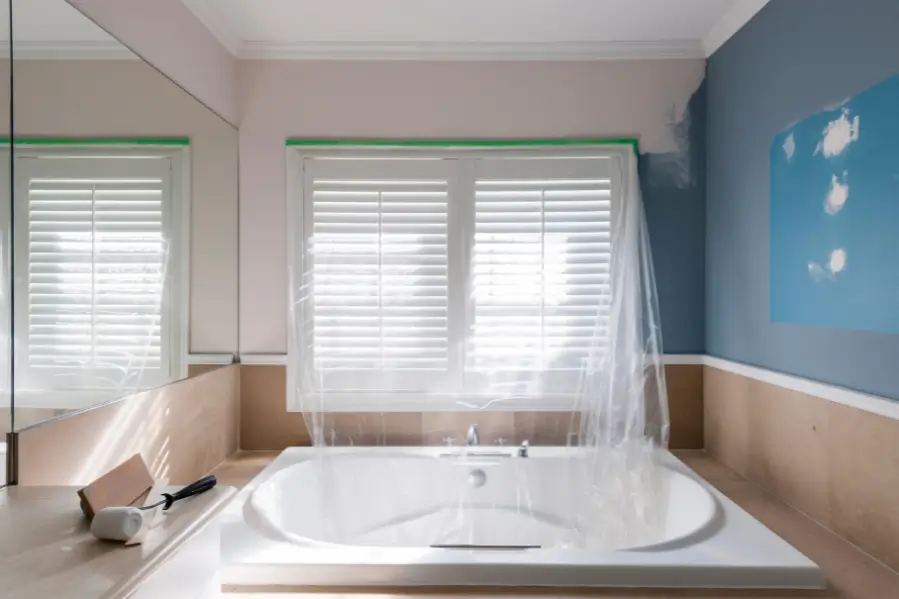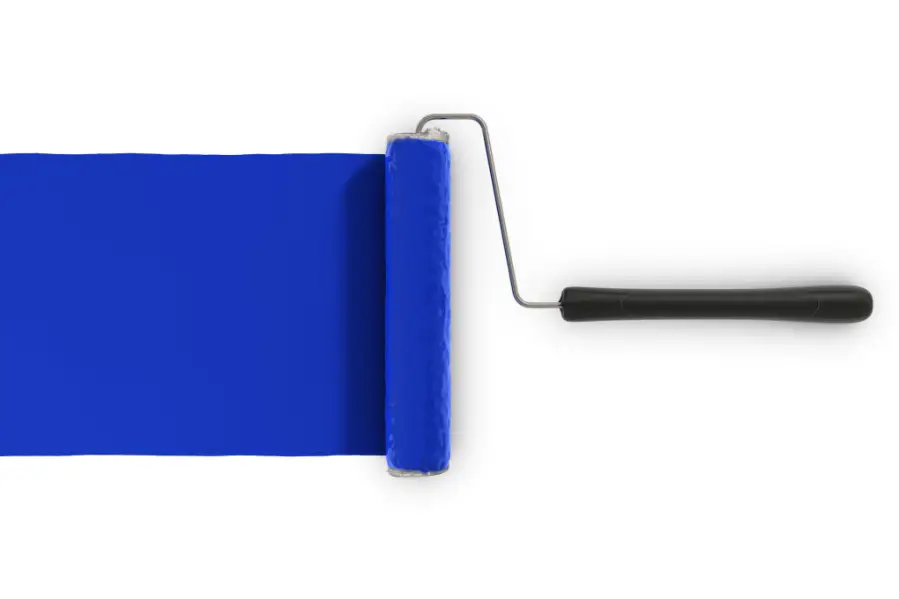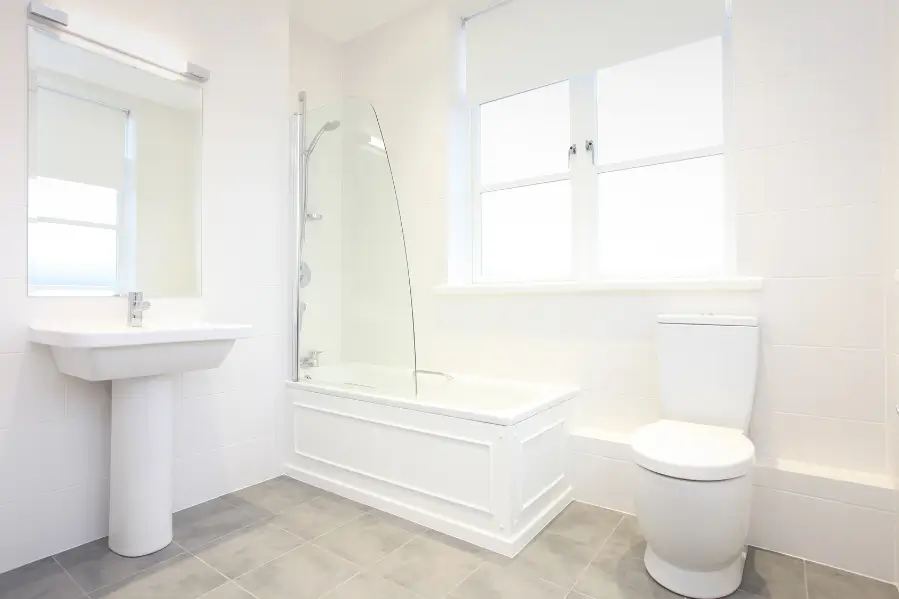When painting, particularly in the bathroom, the type of paint is very important. A bath area is a place with rather high humidity, which possibly leads to mold and mildew formation on the surface, so proper protection of the painting coat does not matter much.
Before getting into the different kinds of paint, it’s important to understand what makes a bathroom special. More than any other room in your house, bathrooms experience high levels of humidity from hot showers, steam, and constant water usage. Peeling, cracking, or mold and mildew forming can be done with the wrong kind of paint.
This article will delve into the details of how to choose the right kind of paint for your bathroom: from the factors involved and the different types of finishes available to specific paint formulations for bathrooms, and further tips to be sure a paint job will last long.
Best Types of Paint Finishes for Bathrooms

Paint finishes have a huge difference like materials and this adds to its appropriateness for work since it is normally set in the bathroom vanity. Here are the different types of finishes explained:
1. Matte
Although an achievement of non-reflection and subtlety in hiding flaws, matte finishes should generally be avoided for bathroom walls. The paints used in the matte finish are usually the kind that absorbs moisture rather than repels it. That fact makes it more likely that mold and mildew will invade and grow. In general, it is not easy to clean either, an unsuitable attribute for a bathroom.
2. Eggshell Finish
This is a low-sheen finish, somewhat shinier than matte. Besides, it is somewhat more durable; thus, you can use it for slightly heavy cleaning, and is best used in bathrooms. Eggshells are still not very friendly with moisture, so they won’t necessarily do very well in high-humidity settings.
3. Satin Finish
Among the most common finishes for bathrooms, satin offers the perfect combination of durability and look. With a slight sheen to them that will reflect light, the room will be brighter while minor imperfections are, at the same time, hidden. The finish is befitting for the bathroom, as it is moisture-resistant and easy to clean.
4. Semi-Gloss Finish
Semi-gloss has a much higher shine level than satin, which also makes it more resistant to moisture, apart from being more hard-wearing. It is best suited to areas with high traffic, like bathrooms, as cleaning is relatively easy, and it resists mildew. Semi-gloss is often the prime pick for the painting of trims, cabinets, and walls in bathrooms, offering a neat, polished image.
5. High-Gloss Finish
This finish is best suited for maximum light reflection and scrubbability; it is the most durable, moisture-resistant, and makes bright, shiny surfaces. The high-gloss finish is highly reflective and shiny, repelling water, and able to undergo frequent scrubbing without ruining the paint. It’s a great finish for trim, doors, and cabinets, but it can be overkill on big wall surfaces or spaces with a lot of imperfections.
Specialized Paints for Bathrooms

Paints that are applied to coat bathroom walls and ceilings must be interior-formulated emulsion paints. The paint is often water-based. Today, it is rare for oil-based paints to be implemented on walls. Oil-based paints are common on wood and metal, such as doors and skirting boards, because they are more hard-wearing in those areas.
Besides the standard paint finishes, there are specialized paints, which contain additives that prevent the growth of molds and are specifically formulated to withstand.
1. Anti-Mold/Mildew Paint
This paint includes antimicrobial agents that provide residual action in controlling the growth of mold and mildew. Best for a bathroom, it does particularly well in bathrooms that have insufficient ventilation. Many of these paints are available in a range of finishes, so it’s easy to obtain the level of sheen one prefers in their bathroom.
2. Moisture-Resistant Paint
Moisture-resistant paints are made to resist peeling or blistering for high levels of humidity. They are generally used with a primer that seals the surface in preparation for placing the topcoat. These sorts of paints are indeed ideal for bathrooms since they not only block the entrance of moisture into the walls but also keep it out.
3. Sheen Finishes
The more reflective and durable the paint will become, the higher the sheen. Gloss, along with satin, which is considered high and medium sheen, is most recommended to be used over woodwork and metal for better durability.
Low and medium-sheen finishes work well with interior walls and ceilings. The sheen provides a good balance of appearance and durability and easily copes with the moisture level added on.
Choosing the Right Paint Color for Your Bathroom
While durability and resistance to moisture are of utmost importance in a bathroom, it is color that is the paint’s true personality. The correct personality can make a space feel larger rested, depending on what you wish to attain.
- Light Colors: White, pale blue, soft gray, and beige are the most common colors for bathrooms because these set a clean and airy sensation. They reflect more light, making even the smallest bathroom seem a little larger and brighter. Light colors may also possess a calming feature that is perfect for any spa-like setting.
- Dark Colors: Dark colors add a lot of drama and sophistication to a bathroom, but they may tend to make the space look and feel smaller and a tad more claustrophobic. Something very dark, like navy, charcoal, or deep green, when used smartly on an accent wall in a light bathroom, can create a striking contrast and add a very deep layer to the room.
- Neutral Colors: Neutral colors are versatile by nature. Tones such as taupe, greige (a combination of gray and beige), and soft browns in the bathroom are so warm and cozy in their natural appeal that they blend well with traditional and modern bathroom design approaches.
- Bold Colors: Bold colors, such as vibrant teal, sunny yellow, or rich coral, are full of energy and will pull this color into the bathroom. Spaces like powder rooms or guest bathrooms are a great place to get away with these colors, where you can experiment with crazier design choices and not feel like you’re in the design boxing ring with the over-the-top boldness of color.
Smart Painting Solutions: Bathroom Transformations with Smart Remodeling LLC
Smart Remodeling LLC, can change a bathroom into a magnificently renewed area full of style and durability. We can ensure that your bathroom is beautiful, resilient, and ready to take on the challenges of high moisture and daily use.
Get a lovely bathroom with Smart Remodeling LLC – a bathroom that is not only beautiful but built to last. Adding strength to our commitment and quality, we are proud to have been awarded the 2024 Best of Home Improvement Award. When you choose Elite Bathroom Finishes, you are choosing a company that cares about superior craftsmanship and customer contentment just as much as you do.
It is in the quality, detail, and expertise that our experts know what kind of right paint and finishes will go toward that perfect bathroom. They will take you through moisture-resistant emulsion paints, and anti-mold solutions, to that perfect finish that will complement and bring out your design. This is very true, and we pride in quality assurance for our customers through the bathroom remodeling services variously provided.
Wrapping it up!
Selection of the correct paint for bathrooms: a combination of the correct finish, specialized bathroom paints, and proper techniques in application. Any paint now can be made anti-fungal through additives in its composition. Anti-mold paint is specially formulated not to feed the fungi that thrive in hydrated environments.
Keen attention should be given to the preparation of these walls before painting to prevent moisture from going through the paint, therefore protecting the paint from damage. Proper consideration and consulting a contractor can help in keeping a bathroom functionally healthy and aesthetically attractive.
FAQs
1. Can you paint over existing bathroom paint?
Yes, you can paint over any existing bathroom paint, but it has to be clean, dry, and has had the surface prepared well. That means sanding and cleaning, using a primer to ensure the new paint adheres well if necessary
2. How often should I repaint my bathroom?
The frequency to redo the bathroom paint depends on the quality of paint one uses and how heavily it may be utilized. Quality paint, generally, in a well-painted bathroom, would need repainting every 3 to 5 years, pending its current appearance and resistance to moisture.
3. Can I use regular interior paint in my bathroom?
You can, but it is not the best for a very moist bathroom. For that reason, using regular paint may not do so well since areas in a bathroom would not be well protected with enough moisture resistance and cause peeling or blistering of the paint or even growing mold. It’s better to use paints specifically formulated for bathrooms.






